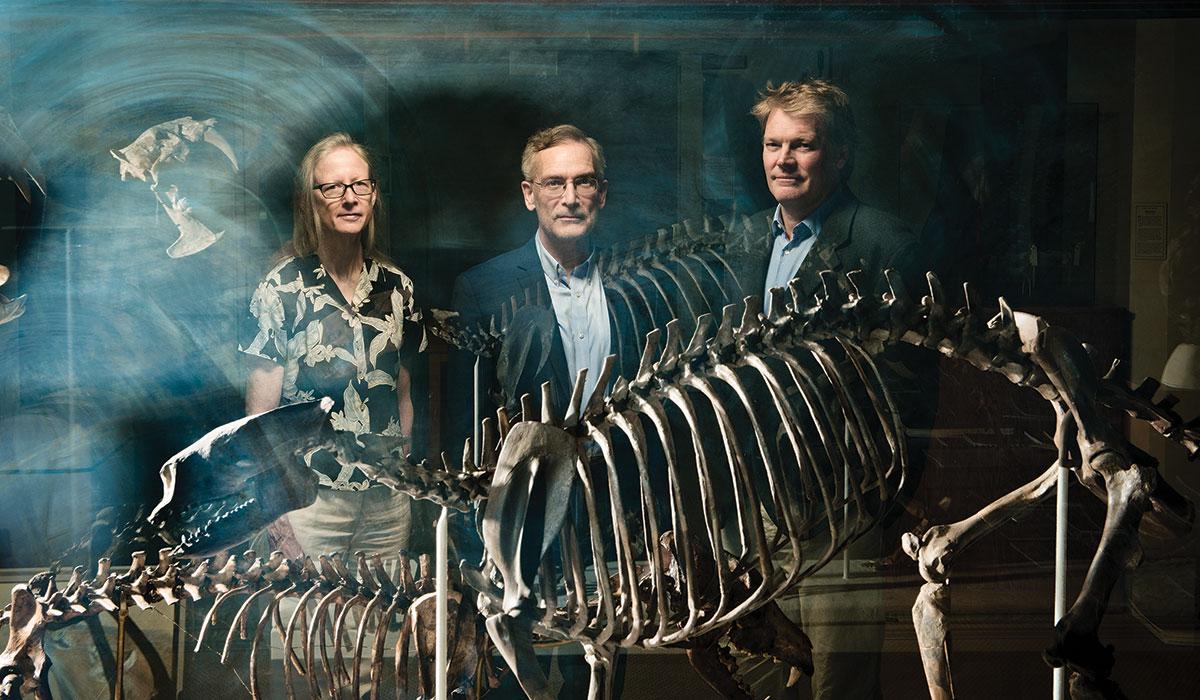Princeton’s environmental-science programs are about to get a big boost.
Officials announced in April that the University is moving forward with plans for a new building for environmental studies and more resources for ecology and evolutionary biology (EEB), geosciences, and the Princeton Environmental Institute (PEI).
“The issues of the environment and our place in nature are [among] the most vexing and most urgent challenges for the current generation, but even more so for the next generation of leaders and thinkers and members of society,” said EEB department chair Lars Hedin. “This is exactly the kind of societal problem where Princeton can offer unique forms of leadership.”
The announcement followed the report of a task force, chaired by Hedin, which examined the natural sciences at Princeton and around the world and offered recommendations on how the University should invest in and develop the disciplines.
Geosciences department chair Bess Ward said faculty members have been requesting new equipment and building renovations for years. “In geosciences, you understand that things take time,” she said. “It’s been a consultative and interactive development of ideas, and I’m happy to see where it’s going.”
Propelled by the importance of studying the environment as the globe continues to warm and as student interest expands, the task force’s most ambitious recommendations were the creation of an expanded environmental institute and construction of a new building for the environmental-studies programs.
Hedin said the building will be designed to bring faculty and students in the three programs together for frequent collaboration and greater innovation. “It’s a natural intellectual marriage,” he said.
The number of students in each of the programs has been rising over the last 10 years. Geosciences, which studies the Earth, atmosphere, and oceans, has 16 graduating seniors. EEB, which studies organisms and ecosystems, has 48. And PEI, which studies environmental issues across disciplines, awards an environmental studies certificate to about 45 students each year. Geosciences and EEB have about 40 faculty and 70 graduate students combined, and PEI has 126 faculty and associated faculty members.
Environmental-studies classes have been attracting students from a variety of academic majors, Ward said.
Interaction between environmental studies and other departments on campus is a core feature of the University’s strategic planning. The Andlinger Center for Energy and the Environment is focused primarily on studying the environment in conjunction with engineering and technology, and the proposed expansion of PEI would link the natural sciences, the humanities, and public policy.
“Princeton is uniquely structured to put together these kinds of interdisciplinary teams, given the University’s small size and lack of institutional barriers,” said Professor Michael Celia, who will become PEI’s faculty director in July and who is part of a working group planning the future of the institute. “PEI serves as the natural home to these kinds of broad efforts.”
Kathy Hackett, PEI’s executive director, said taking the lead on environmental issues “is consistent with the University’s commitment to be in the nation’s service and in the service of humanity.”
The early-1900s-era Guyot and Eno halls are “ill-suited” for the departments’ laboratory needs, President Eisgruber ’83 and Dean of the Faculty Deborah Prentice said. “The situation is unsustainable; the scientists must have the facilities they require to continue to do first-rate work and collaborate effectively,” they wrote in response to the task force’s report.
Eisgruber said land along Ivy Lane and Western Way is a “promising” location for the environmental-studies building, though he said more consultations are needed before a final site is selected. After that, an architect would be selected and fundraising would begin.
Future plans for Guyot and Eno — and for the 25-foot-long Allosaurus in Guyot’s main hall — have not been announced.
While a new home would be the most visible investment in environmental studies, the University also has committed to expanding funding for undergraduate and graduate research on campus and abroad.
Princeton’s expanded commitment to environmental studies comes at a time when President Donald Trump has rescinded executive orders from the Obama administration designed to combat climate change, and environmental-protection programs are being curbed. Ward said she and her colleagues feel “a responsibility to the public good” in their research at this time.
For the record
The photo caption originally published with this story incorrectly identified the skeleton in the foreground as Allosaurus, a dinosaur; it is Phenacodus primaevus, a condylarth.

